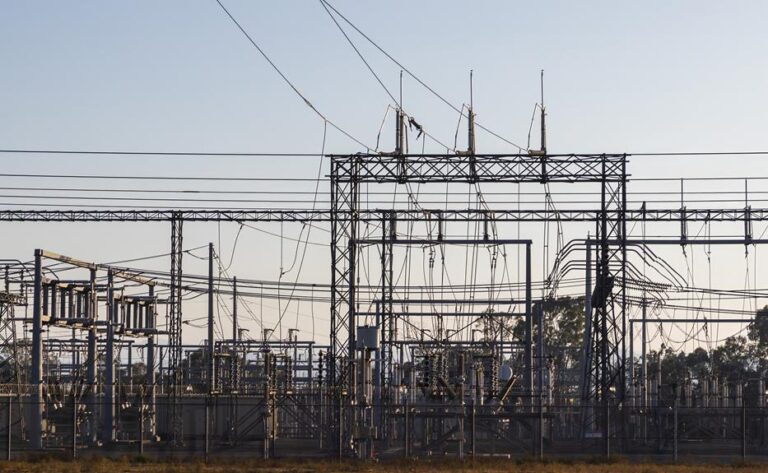E85 Conversion: Unleashing the Power of Alternative Fuels
Like a caterpillar metamorphosing into a butterfly, converting a car to run on E85 unleashes a new realm of possibilities. The E85 conversion process is an innovative, technical, and economically viable solution for those seeking liberation from traditional fuels. This article explores the science, environmental impact, and financial implications of such a conversion, illuminating the potential benefits and challenges to help you navigate toward a more sustainable, alternative fuel future.
Key Takeaways
- E85 conversion can enhance engine performance by increasing horsepower and torque, while also reducing engine operating temperature and improving thermal efficiency.
- E85 fuel has a lower carbon footprint compared to traditional gasoline, making it a more environmentally friendly option.
- E85 conversion requires precision and expertise at each stage of the process, including retrofitting the engine with components that can withstand E85's corrosive nature and adjusting the engine's computer settings for optimal performance.
- Despite the challenges of limited availability and lower energy content, E85 and other alternative fuels have a promising future in achieving sustainability, supported by technological advancements, government policies, and the importance of energy independence and environmental preservation.
Understanding E85: An Overview
Although E85 is becoming increasingly popular as an alternative fuel, it is crucial to understand its composition, benefits, and potential drawbacks to fully harness its power. Composed of 85% ethanol and 15% gasoline, E85 fuels offer a significant reduction in carbon emissions compared to traditional gasoline.
There are, however, certain requirements for vehicles using E85. An E conversion kit is necessary for conventional engines to handle this high-ethanol fuel. This kit includes performance fuel injectors and a high-performance fuel pump to ensure efficient fuel flow and combustion.
E85's high ethanol content provides a higher octane rating, leading to increased horsepower and torque. Yet, it's essential to note that E85 may lead to a decrease in fuel economy due to the lower energy content of ethanol.
The liberation from dependence on fossil fuels that E85 provides is indeed enticing. However, a comprehensive understanding of its nature, benefits, and potential drawbacks will ensure its power is harnessed effectively and sustainably.
Having discussed E85's characteristics and the necessary vehicle modifications, let's delve deeper into the science behind E85 conversion in the next section.
The Science Behind E85 Conversion
The conversion process for E85, a complex biochemical reaction, fundamentally transforms the fuel's composition, enabling its efficient use in adapted engines. This process involves meticulous adjustments and enhancements, such as fuel system upgrades and intake manifold spacers modifications, to accommodate the different chemical composition of E85.
Here are three key stages of E85 conversion:
- Fuel System Upgrades: The initial stage involves retrofitting the engine with components that can withstand E85's corrosive nature. This includes upgrading fuel lines, injectors, and fuel pumps.
- Intake Manifold Spacers: These spacers are modified or replaced to ensure optimal air-fuel mixture, which is critical for the engine's performance.
- Tuning and Calibration: The final stage involves adjusting the engine's computer settings to optimize performance, fuel economy, and emissions.
Each stage requires precision and expertise, empowering your engine to utilize this alternative fuel effectively. This technical overhaul not only liberates your vehicle from its dependency on traditional fuels but also maximizes its performance potential.
In our subsequent section, we will delve into the 'benefits of e85 conversion for your vehicle'. Discover how these intricate modifications can unlock unprecedented benefits for your vehicle.
Benefits of E85 Conversion for Your Vehicle
Shifting our focus to the tangible benefits of E85 conversion for your vehicle, two key advantages emerge: enhanced engine performance and significant reduction in environmental impact. The conversion to E85 allows for a higher compression ratio in the engine, which typically leads to increased horsepower and torque. Meanwhile, using this biofuel alternative also contributes to a decrease in greenhouse gas emissions, playing a crucial role in environmental conservation.
Enhanced Engine Performance
Your vehicle's engine performance can see significant enhancements through an E85 conversion, offering an array of benefits. This alternative fuel isn't just economically beneficial and environmentally friendly but also significantly improves your vehicle's performance characteristics.
- Increased Horsepower: E85 has a higher octane rating, which allows for a higher compression ratio and more aggressive spark timing, resulting in increased horsepower.
- Improved Thermal Efficiency: E85 absorbs more heat during the combustion process, reducing the engine's operating temperature and enhancing its thermal efficiency.
- Reduced Engine Wear: The cooling properties of E85 lead to less engine wear, contributing to a longer engine life.
These advantages are transforming the way we view fuel, equipping us with the power to drive change, literally and figuratively.
Environmental Impact Reduction
While enhancing vehicle performance, E85 conversion also considerably reduces environmental impact, thereby offering a double win for users. E85, a blend of 85% ethanol and 15% gasoline, burns cleaner than traditional gasoline, resulting in lower carbon emissions. The conversion to E85 also results in lower levels of harmful volatile organic compounds (VOCs) and nitrogen oxides (NOx), which are significant contributors to air pollution, smog, and climate change. Furthermore, since E85 is largely derived from renewable resources like corn and sugarcane, it helps reduce dependency on fossil fuels, promoting a more sustainable energy future. This not only liberates consumers from the volatility of oil prices but also contributes to the global fight against environmental degradation.
Environmental Impact of Using E85 Fuel
The environmental implications of E85 fuel usage warrant a comprehensive exploration. First, we will scrutinize the emissions produced by E85, examining how this biofuel impacts air quality compared to traditional gasoline. We will also connect the production of this ethanol-based fuel to deforestation, elucidating the potential ecological consequences.
E85 Fuel Emissions
Considering E85 fuel emissions, it's crucial to analyze the environmental impact associated with the use of this alternative fuel.
- Carbon Dioxide Emissions: E85 fuel, predominantly composed of ethanol, produces fewer carbon dioxide emissions compared to conventional gasoline. This reduction in greenhouse gases contributes positively to the fight against climate change.
- Biodegradability: In the event of a spill, E85 is more biodegradable than gasoline. This reduces the long-term environmental damage in such scenarios.
- Energy Production: The production of E85 fuel, usually from corn or other biomass, can potentially lead to a higher energy output than fossil fuels, adding a dimension of sustainability.
The transformative potential of E85 fuel lies in its ability to marry environmental responsibility and energy efficiency, thus providing an innovative solution for those seeking liberation from conventional fuels.
Deforestation and E85
A significant environmental concern linked to the production of E85 fuel is the potential for deforestation, as vast tracts of land are required to grow the corn or other biomass used in its manufacture. The conversion of forests into farmland not only threatens biodiversity but also contributes to global warming as trees, which absorb carbon dioxide, are cut down.
However, innovative strategies can mitigate these impacts. For instance, optimizing land use by integrating food and energy crops or utilizing waste biomass can significantly reduce the land footprint of E85 production.
| Strategy | Description | Potential Impact |
|---|---|---|
| Integrated Crop Management | Co-cultivating food and energy crops | Reduced land use |
| Waste Biomass Utilization | Using agricultural or industrial waste | Reduced deforestation |
| Reforestation | Replanting trees on degraded land | Carbon sequestration |
The Process of Converting a Car to Run on E85
Understanding the intricacies involved in the conversion of a conventional vehicle to operate on E85 ethanol fuel is essential for leveraging the power of this alternative energy source. It's not merely a matter of switching fuels; a car that's designed to run on gasoline won't typically run on E85 without some modifications.
The process of conversion involves three key steps:
- Fuel System Modification: The existing fuel system, including the fuel pump, fuel lines, and injectors, must be upgraded to withstand the corrosive nature of ethanol. High-performance devices designed specifically for E85 use are recommended.
- Engine Tuning: The engine control unit (ECU) needs to be recalibrated or replaced to properly manage the higher oxygen content and different air-fuel ratio of E85. Some vehicles may require a flex fuel sensor for optimal performance.
- Maintenance and Monitoring: Post-conversion, the vehicle should be regularly checked for any potential corrosion or wear caused by E85. This includes monitoring fuel filters and engine oil conditions.
Cost Analysis: The Economics of E85 Conversion
How cost-effective is the process of converting a conventional vehicle to run on E85 in the long run? To answer this question, we need to delve into the fiscal aspect of the E85 conversion.
The upfront cost of conversion kits ranges from $300 to $600, depending on the model of the vehicle. Fuel economy typically decreases by about 15-30% because E85 has less energy per gallon than gasoline. However, E85 often costs less per gallon than gasoline, which can offset the reduced fuel economy.
Here is a basic analysis table:
| Expense Type | Cost |
|---|---|
| Conversion Kit | $300-$600 |
| Fuel Economy Decrease | 15%-30% |
| E85 Price per Gallon | $1.50-$3.00 |
| Gasoline Price per Gallon | $2.00-$4.00 |
Despite the initial conversion cost and reduced fuel economy, savings from the lower price of E85 can make the switch economical in the long run, especially for those driving substantial miles. Therefore, the economic viability of E85 conversion largely depends on individual driving habits and local fuel prices. The move towards E85 not only represents a financial decision but also a step towards energy liberation and environmental stewardship.
Potential Challenges and Solutions in E85 Conversion
Despite the apparent benefits, transitioning from conventional fuels to E85 is not without its challenges, and identifying potential solutions is essential for a smooth conversion process. Here, we scrutinize the hurdles that may arise and offer innovative resolutions.
- Engine Compatibility: Not all engines are designed to handle E85. This biofuel is more corrosive than gasoline, which may cause damage to engines not specifically designed or retrofitted for E85 use. A potential solution is the conversion of your vehicle to be E85 compliant, a process that involves replacing certain components, such as fuel injectors and lines.
- Fuel Availability: E85 is not as widely available as traditional gasoline. To overcome this, efforts should be made to increase the production and distribution of E85. Government policies can play an influential role in this.
- Higher Fuel Consumption: Vehicles running on E85 tend to consume more fuel due to its lower energy content. To counteract this, research and development should focus on improving the energy efficiency of E85 engines.
The journey towards E85 conversion, though challenging, is a significant move towards environmental liberation. By facing these challenges head-on, we can harness the full potential of this alternative fuel.
Case Study: Successful E85 Conversions
To shed light on the practical aspects of E85 conversion, let's delve into several case studies that exemplify successful transitions to this alternative fuel.
First, we explore the case of a municipal fleet in Illinois, which transitioned over 200 vehicles to E85. Aided by the Clean Cities Coalition, the transition resulted in a 25% reduction in greenhouse gas emissions. The pioneering move also sparked widespread adoption of E85 across other fleets in the region, ushering in significant environmental benefits.
Similarly, a taxi service in Minnesota converted its entire fleet to run on E85. The switch, coupled with the use of hybrid vehicles, led to a 40% reduction in carbon emissions. It also resulted in substantial fuel cost savings, proving that E85 conversion can be both eco-friendly and economically viable.
Lastly, a school district in Indiana transitioned its buses to E85, which led to a 20% decrease in harmful emissions. This case demonstrated the potential of E85 in heavy-duty applications, paving the way for further innovation in the sector.
These examples underscore that successful E85 conversion is not only achievable but also beneficial on multiple fronts, from environmental impact to operational costs.
The Future of E85 and Other Alternative Fuels
As we gaze into the horizon of energy innovation, it becomes clear that the future of E85 and other alternative fuels is not just promising, but integral to the very sustainability of our planet. The adoption and development of these energy sources are pivotal in our quest for energy independence and environmental preservation.
Three key factors are poised to drive this revolutionary change:
- Technological Advancements: Emerging technologies in fuel production and engine design are enhancing the performance and efficiency of E85 and other alternative fuels. This, combined with the digital revolution in energy management, is propelling us towards a cleaner, more sustainable future.
- Policy Support: Governments globally are increasingly recognizing the value of alternative fuels, enacting policies and initiatives to support their adoption. These range from tax incentives for biofuel production to mandates for green energy use in public transport.
- Public Awareness & Acceptance: As the realities of climate change become more apparent, the public is showing a growing appetite for eco-friendly lifestyle changes. This shift in mindset is vital in driving the demand for, and acceptance of, alternative fuels.
As we shape our energy future, E85 and other alternative fuels stand at the forefront of this liberation, presenting viable solutions to our most pressing environmental challenges.
Frequently Asked Questions
What Are the Major Companies That Provide E85 Conversion Kits?
Major companies offering E85 conversion kits include Flex Fuel US, Change2E85, and Fuel Flex International. These firms provide innovative solutions for those seeking to harness the potential of alternative, environmentally-friendly fuel options.
Are There Any Government Incentives for Converting to E85?
Yes, there are government incentives for converting to E85. These incentives, like a beacon guiding ships, encourage the adoption of alternative fuels. They range from tax credits and deductions to grants and loan guarantees.
Can E85 Conversion Impact My Vehicle's Warranty?
E85 conversion may impact your vehicle's warranty. Manufacturers may not cover damage related to fuel system alterations. It's crucial to understand the specific terms of your warranty before making any conversion modifications.
How Widespread Is the Availability of E85 Fuel Across the Country?
E85 fuel availability varies significantly across the country. While it's readily accessible in corn-growing states like Iowa and Minnesota, it's less common in other regions. Infrastructure expansion is needed for wider E85 distribution.
Are There Any Specific Car Models That Are More Suited for E85 Conversion?
Yes, vehicles known as Flex Fuel Vehicles (FFVs) are designed to run on any blend of gasoline or E85. Popular models include certain versions of the Ford F-150, Chevrolet Silverado, and Jeep Grand Cherokee.
Conclusion
In conclusion, the conversion to E85 presents a potent solution to lessening our environmental footprint and dependence on traditional fossil fuels. Despite the potential challenges, the environmental and economic benefits, coupled with technological advancements, make it a practicable option for many motorists. As E85 and alternative fuels continue to evolve, they are likely to become an increasingly significant part of the global energy equation.







